Buying Guide for the Best Home Treadmills
Choosing the right home treadmill can significantly impact your fitness journey. It's important to consider various factors to ensure you get a treadmill that meets your needs and helps you achieve your fitness goals. Here are some key specifications to consider when selecting a home treadmill, along with explanations to help you understand their importance and how to choose the best fit for you.Motor PowerThe motor power of a treadmill is measured in horsepower (HP) and determines how smoothly and efficiently the treadmill operates. A higher HP motor can handle more intense workouts and heavier users. For walking and light jogging, a motor with 2.0 to 2.5 HP is usually sufficient. For regular running or if multiple users will be using the treadmill, look for a motor with 3.0 HP or higher. Consider your workout intensity and frequency to choose the right motor power.
Running SurfaceThe running surface, or belt size, is the area where you run or walk. A larger running surface provides more comfort and safety, especially for taller users or those with a longer stride. Standard belt sizes range from 16 to 22 inches in width and 45 to 60 inches in length. For walking, a smaller belt size may suffice, but for running, especially at higher speeds, a larger belt size (20 inches wide and 55 inches long or more) is recommended. Consider your height and stride length when choosing the running surface.
CushioningCushioning refers to the shock absorption system of the treadmill, which reduces the impact on your joints while running or walking. Good cushioning can help prevent injuries and provide a more comfortable workout experience. Treadmills with adjustable cushioning allow you to customize the level of shock absorption. If you have joint issues or plan to use the treadmill frequently, look for models with superior cushioning systems. Evaluate your need for joint protection and comfort to determine the right level of cushioning.
Incline and Decline SettingsIncline and decline settings allow you to simulate uphill and downhill running, adding variety and intensity to your workouts. Incline settings can range from 0% to 15% or more, while some treadmills also offer decline settings. These features can help you target different muscle groups and burn more calories. If you want to challenge yourself and add versatility to your workouts, look for treadmills with a wide range of incline and decline options. Consider your fitness goals and the type of workouts you enjoy when choosing these settings.
Speed RangeThe speed range of a treadmill indicates how fast the belt can move, typically measured in miles per hour (mph). Most home treadmills offer speeds from 0.5 to 10 mph, with some models going up to 12 mph or higher. For walking, a maximum speed of 6 mph is usually sufficient, while runners may prefer a treadmill with a higher top speed. Assess your fitness level and workout preferences to determine the appropriate speed range for your treadmill.
Weight CapacityThe weight capacity of a treadmill indicates the maximum user weight it can safely support. This is an important factor to ensure the treadmill's durability and performance. Most home treadmills have weight capacities ranging from 250 to 400 pounds. Choose a treadmill with a weight capacity that exceeds your body weight to ensure stability and longevity. Consider the heaviest user who will be using the treadmill when determining the appropriate weight capacity.
FoldabilityFoldability refers to the treadmill's ability to fold up for easy storage, which is particularly useful for those with limited space. Folding treadmills can be stored vertically to save floor space when not in use. If you have a small home or plan to use the treadmill in a multi-purpose room, look for models with a reliable folding mechanism. Evaluate your available space and storage needs to decide if a foldable treadmill is the right choice for you.
Console FeaturesThe console features of a treadmill include the display and controls, as well as additional functionalities like workout programs, heart rate monitoring, and connectivity options. A clear and user-friendly console can enhance your workout experience. Some treadmills offer built-in workout programs, Bluetooth connectivity, and compatibility with fitness apps. Consider what features are important to you, such as tracking your progress, entertainment options, or guided workouts, to choose a treadmill with the right console features.
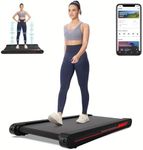
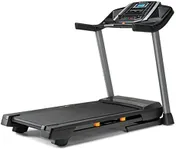

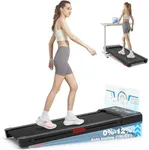
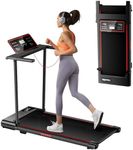
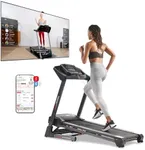
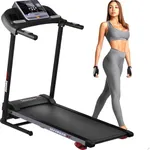
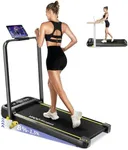


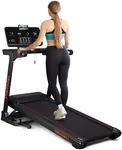

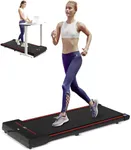
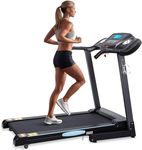
![GARVEE 4.0 HP Folding Treadmill, [400 LBS Max] [0.6-8.7MPH] Heavy Duty Treadmill with 14.5" LED Display & Pulse Detection Foldable for Home Office Apartment Exercise- Black](https://images-proxy.bestreviews.guide/AP4hO4vk7n_sRlX7H4nh9ZzxDRM=/0x150/https://m.media-amazon.com/images/I/41WJa4wqn8L._AC_CX679_.jpg)
![SPORTY&FIT 4.0HP Folding Treadmill, [0.6-8.7 MPH] [Max 400LBS] [No Assembly] Electric Treadmill for Running Walking, Foldable Treadmill with LCD Monitor & Pulse Detection for Office Home Workout](https://images-proxy.bestreviews.guide/YVs3YXNXEXYubZ3g2XyajTCyuCo=/0x150/https://m.media-amazon.com/images/I/41vPxgvsvLL._AC_CX679_.jpg)






